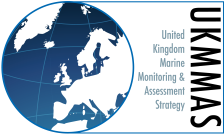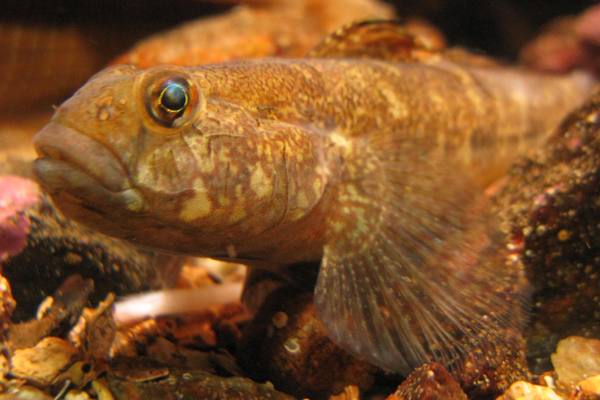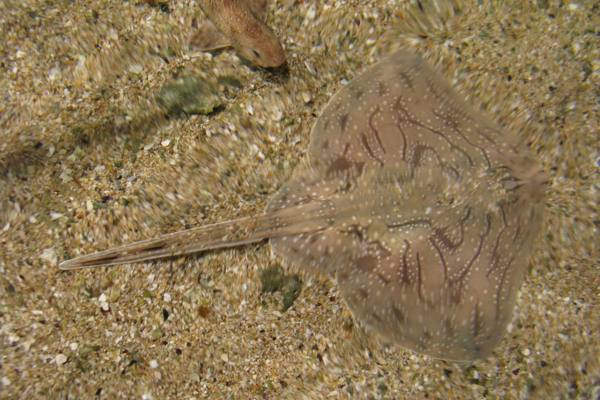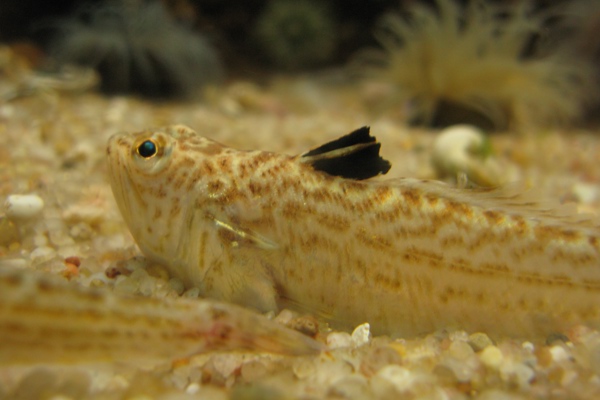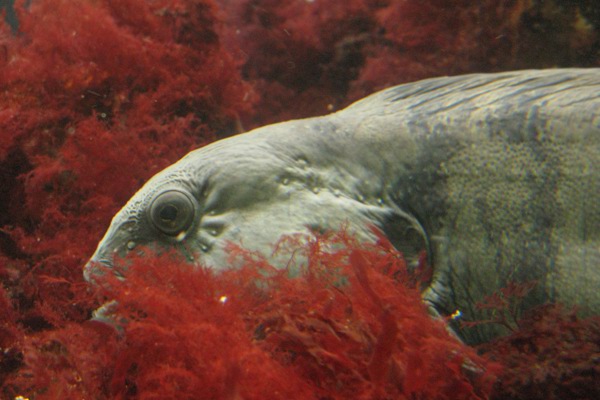Fish
Assessment of progress towards the achievement of Good Environmental Status for fish biodiversity.
Extent to which Good Environmental Status has been achieved
Demersal fish biodiversity is recovering from a history of over-exploitation, but Good Environmental Status has not yet been achieved in either the Greater North Sea or the Celtic Seas. A partial assessment of pelagic shelf fish status did not provide a clear result.
How progress has been assessed
In the Marine Strategy Part One (HM Government, 2012), the UK set out the following “Characteristics of Good Environmental Status” for biodiversity:
‘At the scale of the Marine Strategy Framework Directive sub-regions, and in line with prevailing conditions, the loss of biodiversity has been halted and where practicable, restoration is underway: The abundance, distribution, extent, and condition of species and habitats in UK waters are in line with prevailing environmental conditions as defined by specific targets for species and habitats. Marine ecosystems and their constituent species and habitats are not significantly impacted by human activities such that the specific structures and functions for their long-term maintenance exist for the foreseeable future. Habitats and species identified as requiring protection under existing national or international agreements are conserved effectively through appropriate national or regional mechanisms.’
The progress towards achievement of the Good Environmental Status was assessed separately for two groups of fish:
- Demersal shelf species (species that live on or near the sea floor in shelf seas)
- Pelagic shelf species (species that live in the water column in shelf seas)
The status of both demersal species and pelagic species would need to be ‘favourable’ for Good Environmental Status to be achieved for fish biodiversity. However, methods to integrate the outcomes from the current suite of indicators have not yet been developed, so no quantitative integration across indicators has been made. Indicators for demersal fish have a strong assessment basis, but indicators for pelagic fish are newly developed and currently have a weak assessment basis.
The extent that Good Environmental Status, as articulated in European Commission (2010), had been achieved was assessed using targets set out for fish biodiversity in the UK Marine Strategy Part One (HM Government, 2012). The status of demersal species was assessed against targets for population size and ecosystem structure, while the status of pelagic species was assessed against targets for ecosystem structure only. Indicators relevant to the targets were then agreed in cooperation with OSPAR, which used data collected by international fish surveys throughout the Celtic Seas and the Greater North Sea. The indicators assessed here for fish have been developed since the UK Initial Assessment 2012 (HM Government, 2012). Some indicators are trend-based while others have absolute targets. Both methodologies can show how achievement towards Good Environmental Status has been progressing over time.
Further information
The UK Initial Assessment (HM Government, 2012) of fish biodiversity was based mainly on the Large Fish Index (Greenstreet and others, 2011) for demersal fish. Since 2012, this index has indicated a recovery in the proportion of large fish to the west of Scotland, in the Irish Sea and in the Greater North Sea, where the UK target could be achieved by the next assessment cycle. In the south and west of the Celtic Seas evidence of recovery is unclear, and it could take many years before the target is reached unless current levels of pressure are reduced.
Since 2012, three new OSPAR indicators for fish communities have been developed by the UK, and two of these have been applied to pelagic fish for the first time. These used a newly created data product from surveys in the North East Atlantic. As a result, pelagic shelf fish could be partially assessed for trends but not status.
Progress since 2012
The UK Initial Assessment (HM Government, 2012) of fish biodiversity was based mainly on the Large Fish Index (Greenstreet and others, 2011) for demersal fish. Since 2012, this index has indicated a recovery in the proportion of large fish to the west of Scotland, in the Irish Sea and in the Greater North Sea, where the UK target could be achieved by the next assessment cycle. In the south and west of the Celtic Seas evidence of recovery is unclear, and it could take decades before the target is reached unless current levels of pressure are reduced.
Since 2012, three new OSPAR indicators for fish communities have been developed by the UK, and two of these have been applied to pelagic fish for the first time. These used a newly created data product from surveys in the North East Atlantic. As a result, pelagic shelf fish could be partially assessed for trends but not status.
Outstanding issues
- Interpretation of trends in the indicators of pelagic fish communities was problematic because the underlying relationships between pressure, environment, and state are not clear.
- Most indicators used in this assessment are new, and it is currently unclear how to integrate results across indicators to quantitatively assess targets.
- Assessments were limited to the scale of the entire Marine Strategy Framework Directive Sub-Regions, or to the survey area. Assessments at a finer scale would help to underpin the best management advice.
Achievement of targets and indicators used to assess progress
The details of targets (HM Government, 2012), indicator assessment results, and target assessment results are summarized in Table 1.
Table 1. Summary of targets, indicators, and corresponding assessment results MSFD: Marine Strategy Framework Directive (European Commission, 2008).
|
Targets |
Indicator assessment results |
Target Assessment Result |
|
|
Greater North Sea |
Celtic Seas |
||
|
Demersal shelf fish population size: “At the scale of the MSFD sub-regions populations of sensitive fish species are not significantly impacted by human activity.”
|
Recovery in the population abundance of sensitive fish species:
o in a significant number of species in the Celtic Seas
|
Recovery of trends are evident, but the number of species meeting abundance thresholds is still insufficient to meet the target for demersal fish. |
The target for demersal species has been achieved |
|
Demersal shelf fish ecosystem structure: “The size composition of fish communities should reflect a healthy status and not be significantly impacted by human activity.” |
o met thresholds in the north of the Celtic Sea (west of Scotland) o does not currently meet thresholds in the Greater North Sea, or south and west of the Celtic Seas o strong recovery trends were evident for the Greater North Sea, and east of the Celtic Seas (in the Irish Sea), extrapolation of these trends infers that targets could be met by the next cycle o evidence of recovery is either lacking or weak in surveys in the south and west of the Celtic Seas |
Strong recovery evident in the large fish index since 2001. Target likely to be met by the next cycle for demersal fish A recovery in size and species composition is evident in northern UK waters and for demersal fish in the Channel, but long-term decreases have occurred in the central-west and the south-western North Sea. |
The target has not yet been achieved for demersal fish, but recovery of the large fish index is underway across large parts of the Sub-Region. No consistent patterns of change in the mean maximum length indicator for fish (species composition) or typical length indicator (size composition). Evidence in some areas that recovery of large demersal fish species vulnerable to fishing is underway relative to initial stages. However, reductions over time are also evident in some areas. |
|
Species composition in fish communities
|
|||
|
Size composition in fish communities
|
|||
|
Pelagic shelf fish ecosystem structure: “The size composition of fish communities should reflect a healthy status and not be significantly impacted by human activity.” |
Species composition in fish communities
|
Insufficient knowledge of the pelagic fish community to set quantitative targets Changes in the pelagic species composition are evident in some spatial sub-divisions. Pelagic fish show no long-term change in size composition. |
Insufficient knowledge of the pelagic fish community to set quantitative targets No overall trend in either the size or species composition, which have varied greatly over space and time. |
Further information
The population size of demersal fish
Assessment of the target on demersal fish population size
The UK target for demersal fish species (see Table 1) has been met in the Celtic Sea, but not in the Greater North Sea. While, the decline in abundance of sensitive fish species has been halted in the Celtic Seas and Greater North Sea, significant recovery of populations is only apparent in the Celtic Seas.
Evidence to support the assessment of demersal fish population size
The supporting evidence for this target evaluation and the extent that the corresponding criteria in European Commission (2010) has been achieved comes from the assessment of the indicator: recovery in the population abundance of sensitive fish species. This indicator assessment has been undertaken as part of the OSPAR Intermediate Assessment (OSPAR Commission, 2017). As such, the indicator assessment was undertaken in each OSPAR Region (approximately equivalent to the Marine Strategy Framework Directive Sub-Regions) using data from the UK and neighbouring countries.
The abundance of sensitive fish species was assessed against two different sets of assessment thresholds. The first assessment examines whether population recovery is under way and the secondary assessment examines whether population decline has been halted. The assessment year was the last year in each survey time series for which data were available. Both assessments were made with two sensitivity metrics to define suites of sensitive species: average life-history trait and, the newly developed metric, the proportion failing to spawn. Both metrics rely on species’ life history information. Generally consistent results using either metric demonstrate that assessment outcomes were robust to the choice of metric. However, the principal assessment outcome should be based on the proportion failing to spawn metric since this is considered an improvement. Results were integrated across surveys using two different methods to determine if the assessment thresholds for recovery or halting decline were met in each Sub-Region using both ‘averaging’ and ‘probabilistic’ integrating procedures. Choice of integration procedure had minimal effect on assessment outcomes.
Evidence of recovery was compelling in the Celtic Seas, but in the Greater North Sea, the number of sensitive species increasing in abundance was insufficient to meet the assessment threshold. Evidence to support a halt in decline of the abundance of fish species sensitive to fishing mortality is clear. Assessment outcomes suggested that declines in abundance have been halted, since 2010. These conclusions are robust, regardless of which sensitivity metric is used to define suites of sensitive species and the choice of integration method.
Ecosystem structure of demersal fish
Assessment of f the target on ecosystem structure of demersal fish
In the Greater North Sea, the UK target (see Table 1) has yet to be achieved. Strong recent recovery trends were evident in one of the three indicators: the large fish index. This suggests that the proportion of large demersal fish could reach the required thresholds by the next cycle. Another indicator (the mean maximum length) suggests a change in demersal species composition towards smaller sized species in the central and southern North Sea that has yet to be reversed. Notably, the decline in the mean maximum length in the North Sea overall has ceased, and in the Channel an increase towards larger demersal species is evident. Recovery is also underway in the third indicator (typical length), which assesses the size distribution of the demersal fish community. This recovery in typical length has been driven by increases in the northern North Sea and the Channel.
In the Celtic Seas, UK targets have yet to be achieved. Strong recovery trends are only evident in the large fish index for central and northern parts of the Celtic Seas, with the southern part of the Sub-Region showing little or slow recovery. Species composition (indicated by mean maximum length) and size composition (indicated by typical length) have improved in the surveyed areas of the Irish Sea, Sea of Hebrides, The Minch, and the northern Celtic Sea to the south-west of the UK. Decreases in both mean maximum length and typical length are evident on the shelf edge to the west and in the Clyde area.
Evidence to support the assessment of ecosystem structure of demersal fish
The supporting evidence for this target evaluation and the extent that the corresponding criteria in European Commission (2010) has been achieved comes from the assessment of three indicators:
- The proportion of large fish (Large Fish Index, known as LFI)
- Species composition in fish communities (mean maximum length, known as MML)
- Size composition in fish communities (typical length, known as TyL)
The assessments of all three indicators have been undertaken as part of the OSPAR Intermediate Assessment (OSPAR Commission, 2017). As such, the assessments of each indicator were undertaken in each OSPAR Region (approximately equivalent to the Marine Strategy Framework Directive Sub-Regions) using data from the UK and neighbouring countries.
The proportion of large fish:
The assessment in the Greater North Sea relied primarily on two surveys conducted at different times of the year, which both covered most of this Sub-Region. Both surveys suggest that the proportion of large fish does not currently meet assessment thresholds. However, both surveys also show recovery: the proportion of large fish has recovered strongly from its most impacted condition at the turn of the century. Extrapolation of current recovery trends in these two surveys suggests that large fish index assessment thresholds should be met before the next Marine Strategy Framework Directive Assessment in 2022. These results are generally supported by the other surveys that cover smaller geographic areas.
Surveys in the Celtic Seas only covered relatively small parts of that region. The assessment, therefore, relied on the compilation of individual survey-based assessment outcomes. The proportion of large demersal fish met the assessment threshold in the northern half of the Sub-Region. The large fish index in other parts of the Celtic Seas did not meet the assessment threshold. Recovery is evident in the Irish Sea and large fish index assessment thresholds could be achieved by 2019. In the south and west of this Sub-Region, evidence of a recovery in large fish index values is unclear, and at best suggests that it could take a decade or more before the assessment threshold is reached unless current levels of pressure are reduced.
Species composition in fish communities:
Within the Greater North Sea, the mean maximum length of the demersal fish community in the English Channel appeared to be increasing. In contrast, the mean maximum length of demersal fish communities in the southern and central North Sea is declining. There has been no long-term change in species composition of the demersal fish community in the northern North Sea, where a fall in mean maximum length during the 1980s was followed by a subsequent recovery from the mid-1990s onwards.
Within the Celtic Seas, there has been no overall trend in mean maximum length of demersal fish communities, which have varied greatly over time, between surveys, and between Sub-Divisions. The observed decreases in mean maximum length along the shelf-edge waters to the west of Scotland and more inshore, in the Clyde area, suggest that fishing has impacted the fish community there, such that fewer individuals of large and vulnerable species are present. In the surveyed areas of the Irish Sea, the Sea of the Hebrides and The Minch, there have been increases in mean maximum length, which may indicate the start of recovery in local communities in these areas.
Size composition in fish communities:
In the Greater North Sea, overall, the typical length of the demersal fish community is low compared to the early 1980s. The community is, however, recovering: there have been recent increases in typical length in some areas with a high biomass of fish, including the Orkney/Shetland area in the northern North Sea and inshore of the UK coast in the Channel. Nevertheless, there remain areas of concern in the western and southern North Sea, where typical length is at its lowest observed levels, following long-term decreases.
In the Celtic Seas, the multiple surveys showed mixed trends in typical length of the demersal fish community. Surveys in the north of the Sub-Region, to the west of Scotland, suggested some recovery in typical length from previously low values. However, further offshore in Scottish waters near the shelf edge, decreases in Typical Length were apparent. Elsewhere the picture was similarly mixed with increases to the south of Ireland, Isle of Man, Sea of the Hebrides and The Minch, but with decreases in some surveys in the Clyde area and near the Irish Coast of the Irish Sea (in one beam trawl survey but not evident in two otter trawl surveys).
Ecosystem structure of pelagic fish
Assessment of the target on ecosystem structure of pelagic fish
Since 2012, progress has been made developing pelagic fish indicators, but the extent to which Good Environmental Status has been achieved for pelagic shelf fish remains uncertain in both Sub-Regions. This is because there is insufficient knowledge of the pelagic fish community to define Good Environmental Status and to set quantitative targets. Instead, this assessment presents a qualitative account of the results from two new indicator assessments that require further research to underpin their use.
In the Greater North Sea, no change was evident in the size composition of the pelagic fish community, as indicated by typical length. In the southern and central North Sea, there was limited evidence of an overall shift since 2005 in species composition towards smaller-bodied species (those that attain a smaller ultimate body size), as indicated by a decrease in mean maximum length in one of two surveys.
In the Celtic Seas, there was no overall trend in either the size or species composition of the pelagic fish community. Both have varied greatly over time.
Evidence to support the assessment of ecosystem structure of pelagic fish
The supporting evidence for this target evaluation and the extent the corresponding criteria in European Commission (2010) has been achieved comes from two indicator assessments:
- Species composition in fish communities (mean maximum length, known as MML)
- Size composition in fish communities (typical length, known as TyL)
The assessments of both indicators have been undertaken as part of the OSPAR Intermediate Assessment (OSPAR Commission, 2017). As such, the assessments of each indicator were undertaken in each OSPAR Region (approximately equivalent to the Marine Strategy Framework Directive Sub-Regions) using data from the UK and neighbouring countries.
Species composition in fish communities:
Within the Greater North Sea, the mean maximum length of pelagic fish communities showed no long-term change in the northern Sub-Divisions. In the southern and central North Sea, there was limited evidence of an overall shift, since 2005, in species composition towards smaller-bodied species (those that attain a smaller ultimate body size), as indicated by a decrease in mean maximum length in one of two surveys.
In the Celtic Seas, there was no consistent direction of change in species composition: the mean maximum length increased over time in the central Irish Sea, extending into the Celtic Sea, but decreased in many northern areas to the west of Scotland.
Size composition in fish communities:
The pelagic fish community generally showed no consistent direction of change in typical length. While an increase was seen to the south of Ireland, decreases were observed in the Irish Sea in one of three surveys in the Celtic Seas and some northern areas, including the Sea of the Hebrides and Clyde area.
Moving forward
Improve future assessments by investigating the impacts of all pressures on the indicators and the effects of warming seas, which will help establish appropriate baselines and thresholds for all indicators. Procedures on how to integrate results from this new suite of indicators will enable targets to be assessed more quantitatively. We will improve stock assessments and develop an indicator for fish bycatch.
Further information
With the adoption of the revised Commission Decision in 2017 the Indicator Recovery in the population abundance of sensitive fish species, will be an appropriate basis for assessing fish population size under the Biodiversity descriptor. The development of other metrics will be required to assess the new criteria under Biodiversity descriptor. Methods of integrating these criteria to assess the status of each species will need to be developed. The indicators for species structure (mean maximum length, known as MML), size structure (typical length, known as TyL) and the Large Fish Index (known as LFI) are all multi species indicators and can not be used to assess status of individual species under Biodiversity descriptor. These three indicators will be used to assess the Good Environmental Status under the Food Webs descriptor.
A number of knowledge gaps were identified in the individual indicator assessments that will need to be addressed in the most appropriate forum (UKMMAS, OSPAR or the European Commission). The knowledge gaps are described briefly below.
The Initial 2012 Assessment of fish communities was based mainly on the Large Fish Index. This same indicator was used during this assessment, but it became clear that assessments of this indicator could be improved on in the future. Firstly, our evaluation of the long-term robustness of large fish length thresholds would benefit from a better understanding of how warming seas will affect population growth and the potential for population recovery among large-bodied boreal fish species. In addition, the methodology used for the Large Fish Index can be improved by adopting a single universal protocol to determine the optimal length value defining ‘large fish’ in each survey analysed.
Since 2012, there has been great progress made in developing three new OSPAR-wide indicators: abundance of sensitive fish species, species composition (mean maximum length, known as MML) and size composition (typical length, known as TyL) of fish communities. In addition, all the indicators were constructed from a newly reanalysed dataset of fish survey data in the North East Atlantic: the OSPAR Marine Strategy Framework Directive Data Product, led by Marine Scotland Science. So far it has only been possible to set trend-based thresholds for the abundance indicator and no quantitative thresholds could be set for mean maximum length and typical length. A better understanding of relationships underpinning the effects of human pressures and environmental drivers on demersal and pelagic fish communities is required to set robust quantitative thresholds for mean maximum length and typical length, preferably through ecosystem modelling.
This integrated assessment of Good Environmental Status in fish under the Biodiversity descriptor had been made largely by weighing up the results of the different indicators within each region. The early stage of development of the indicators and knowledge gaps outlined above, has meant that a quantitative integrated assessment has not been possible. For the Large Fish Index and indicators of species composition (mean maximum length) and size composition (typical length), separate assessments were carried out in each survey area. No quantitative integration of these survey-scale assessments within indicators was conducted because it was unclear what the most appropriate method would be. A better understanding of the spatial variation in the indicator metrics is needed in order to carry out assessments in the future at appropriate spatial scales.
References
Acknowledgements
European Commission (2008) ‘Directive 2008/56/EC of the European Parliament and of the Council of 17 June 2008 establishing a framework for community action in the field of marine environmental policy (Marine Strategy Framework Directive)’ Official Journal of the European Union L164, 25.6.2008, pages 19-40 (viewed 21 September 2018)
European Commission (2010) ‘Commission Decision of 1 September 2010 on criteria and methodological standards on Good Environmental Status of marine waters’ (notified under document C (2010) 5956) (Text with EEA Relevance) (2010/477/EU) Official Journal of the European Union L232, 2.9.2010, pages 14-24 (viewed on 5 July 2018)
European Commission (2017) ‘Laying down criteria and methodological standards on good environmental status of marine waters and specifications and standardised methods for monitoring and assessment’ Commission Decision (EU) 2017/848 of 17 May 2017, repealing Decision 2010/477/EU. Official Journal of the European Union L 125, 18.5.2017, pages 43-74 (viewed on 5 July 2018)
HM Government (2012) ‘Marine Strategy Part One: UK Initial Assessment and Good Environmental Status’ (viewed on 5 July 2018)
Greenstreet SPR, Rogers SI, Rice JC, Piet GJ, Guirey EJ, Fraser HM, Fryer RJ (2011) ‘Development of the EcoQO for fish communities in the North Sea’ ICES Journal of Marine Science, 68:1-11 (viewed on 22 November 2018)
Greenstreet SPR, Moriarty M (2017) ‘OSPAR Interim Assessment 2107 Fish Indicator Data Manual (Relating to Version 2 of the Groundfish Survey Monitoring and Assessment Data Product)’ Scottish Marine and Freshwater Science Volume 8 Number 17 83 pages (viewed on 22 November 2018)
OSPAR Commission (2017) ‘Intermediate Assessment 2017’ (viewed on 21 September 2018)
